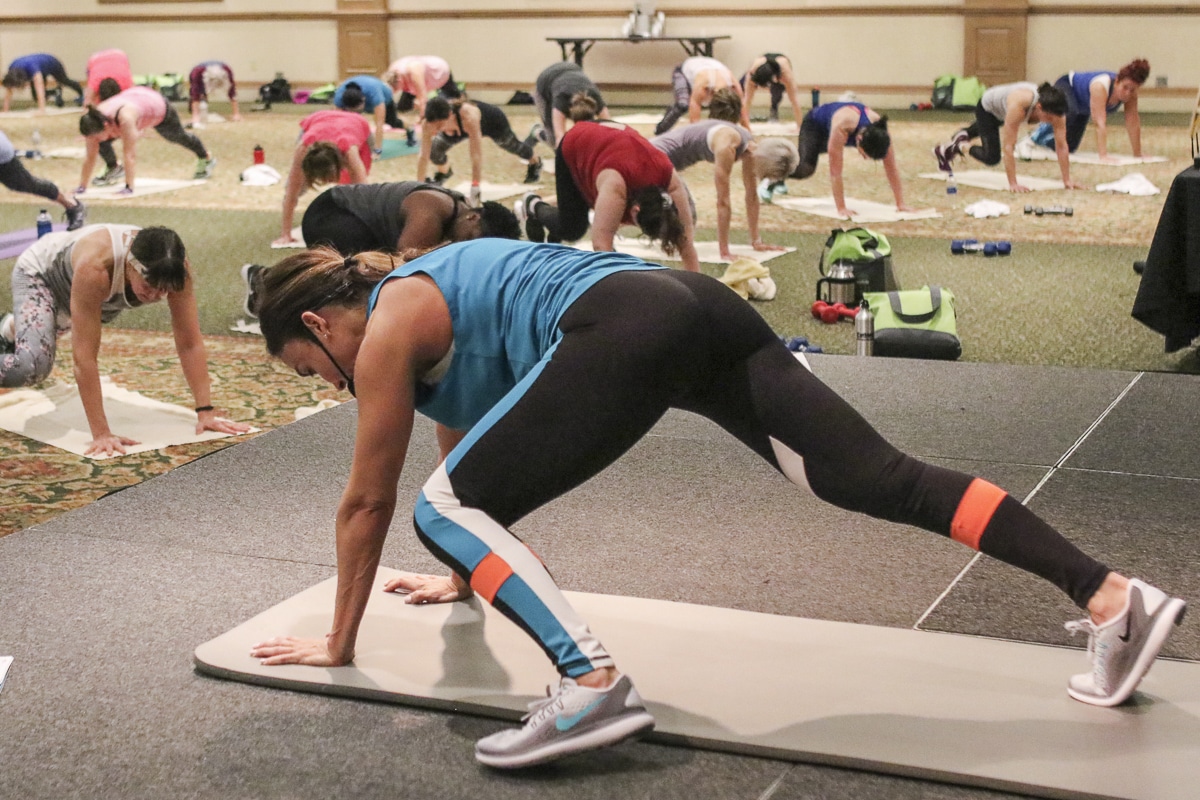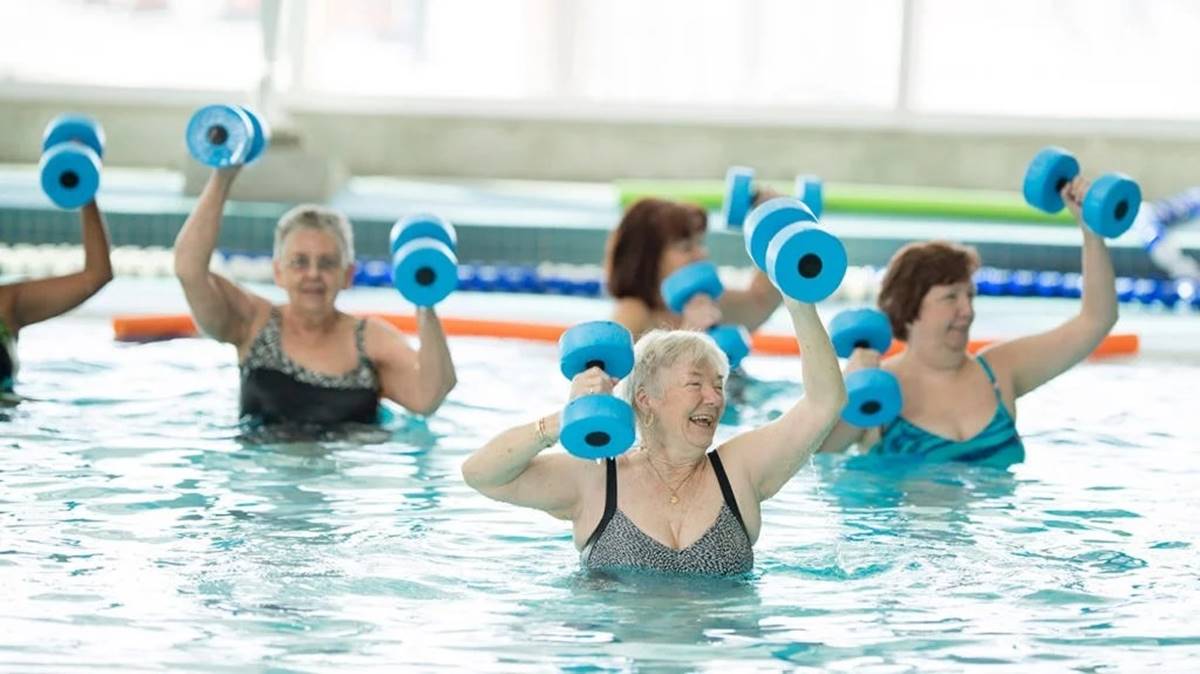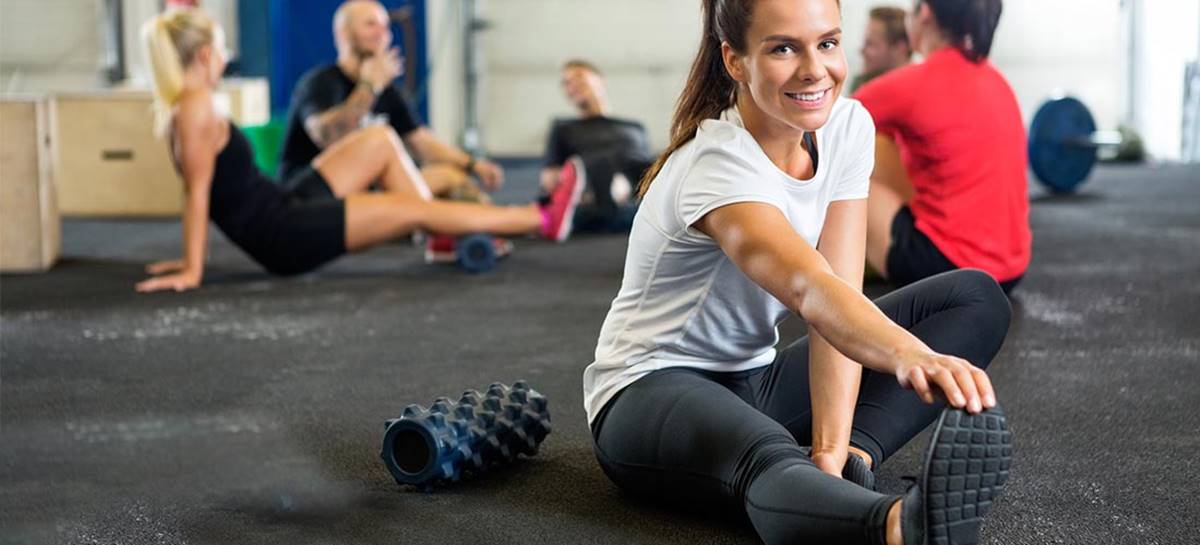Home>Misc>Featured>Why Is A Recovery Period Between Bouts Of Exercise Important?


Featured
Why Is A Recovery Period Between Bouts Of Exercise Important?
Modified: August 19, 2023
Discover the importance of a recovery period between exercise sessions. Explore why featured recovery periods are crucial for optimal fitness and performance.
Introduction
Welcome to the world of fitness and exercise! Whether you’re a seasoned athlete or just beginning your fitness journey, understanding the importance of a recovery period between bouts of exercise is crucial for achieving optimal results. In today’s fast-paced society, we often push ourselves to the limit, striving to do more and achieve more. While the drive to improve is commendable, it’s equally important to recognize the significance of allowing our bodies to rest and recover.
A recovery period refers to the time between one exercise session and the next. It is during this period that our bodies have the opportunity to rebuild, repair, and adapt to the stress placed upon them during physical activity. This recovery time is essential for optimizing performance, preventing injuries, and maintaining overall health and well-being.
But why is a recovery period so important? The answer lies in the physiological and psychological benefits it provides. From cellular repair to mental rejuvenation, the time we allocate for recovery directly influences our ability to progress and thrive in our fitness endeavors.
In the following sections, we will delve deeper into the underlying importance of a recovery period. We will explore the physical and psychological benefits it offers, as well as the factors that influence its duration. Finally, we will discuss strategies for optimizing recovery between exercise sessions, empowering you to make informed decisions and achieve your fitness goals effectively.
Definition of a Recovery Period
Before we delve into the importance of a recovery period, let’s first establish a clear understanding of what it entails. A recovery period, also known as a rest or recovery phase, refers to the period of time between two exercise sessions. It is the time when the body is given the opportunity to heal, repair, and adapt to the stress imposed upon it during physical activity.
During exercise, muscles undergo a process known as microtrauma, where tiny tears occur in the muscle fibers. These tears are a normal part of the muscle adaptation process and occur as a result of the mechanical stress placed upon the muscle. However, for the muscles to grow stronger and more resilient, they require time to repair and regenerate.
Additionally, a recovery period allows the body’s energy stores, such as glycogen, to be replenished. Exercise depletes these energy stores, and adequate rest allows the body to restore them to optimal levels, ensuring optimal performance in subsequent workouts.
It’s important to note that a recovery period does not necessarily mean complete sedentary rest. It can involve various activities that promote active recovery, such as gentle stretching, low-intensity workouts, or activities like yoga or swimming that help enhance blood flow and promote muscle relaxation.
The duration of a recovery period can vary depending on several factors, including the intensity and duration of the previous workout, an individual’s fitness level, age, and overall health. It is essential to listen to your body and give it the time it needs to recover fully before engaging in intense exercise again.
Now that we have a solid understanding of what a recovery period entails, let’s explore the importance of incorporating it into our exercise routines, both for physical and psychological well-being.
Importance of a Recovery Period Between Bouts of Exercise
A recovery period is not just a luxury; it is an essential component of any effective exercise program. It plays a crucial role in optimizing performance, preventing injuries, and maintaining overall health and well-being. Let’s delve into both the physical and psychological benefits of incorporating a recovery period between bouts of exercise.
Physical Benefits
One of the primary physical benefits of a recovery period is muscle repair and growth. When we engage in exercise, especially intense or resistance training, our muscles experience microtears. These tears need time to heal and regenerate, which occurs during the recovery phase. By allowing our muscles to recover adequately, we promote muscle growth and strength development. Inadequate recovery can lead to overtraining, muscle imbalances, and even increased risk of injury.
Additionally, a recovery period allows the body to replenish its energy stores. During exercise, the body uses glycogen, which is stored energy in the muscles and liver. By allowing for sufficient rest, we give our bodies the opportunity to replenish these energy stores, ensuring optimal performance in future workouts.
Furthermore, a recovery period is essential for repairing and strengthening connective tissues, such as tendons and ligaments. These tissues play a crucial role in joint stability and overall movement. Without adequate recovery, the risk of developing overuse injuries, such as tendonitis or stress fractures, significantly increases.
Psychological Benefits
While the physical benefits of a recovery period are crucial, the psychological benefits should not be overlooked. Regular exercise often places a considerable amount of mental and emotional stress on individuals. Taking time to rest and recover allows the mind to rejuvenate, reducing feelings of fatigue, burnout, and mental exhaustion.
A recovery period can also enhance focus and mental clarity. When we’re constantly pushing ourselves without rest, our cognitive abilities and decision-making skills can be compromised. By incorporating regular recovery periods, we give our minds the chance to reset and recharge, leading to improved mental performance and overall well-being.
Moreover, a recovery period provides an opportunity for individuals to practice self-care and mindfulness. Engaging in activities that promote relaxation, such as deep breathing, meditation, or spending time in nature, can help reduce stress levels and enhance overall mental and emotional resilience.
By understanding and appreciating the physical and psychological benefits of a recovery period, individuals can optimize their exercise routine and achieve long-term success in their fitness endeavors.
Physical Benefits of a Recovery Period
A recovery period between bouts of exercise offers numerous physical benefits that should not be underestimated. Let’s explore these benefits in more detail:
Muscle Repair and Growth
One of the primary physical benefits of a recovery period is the repair and growth of muscles. During exercise, particularly intense or resistance training, our muscles undergo microtrauma, resulting in small tears in the muscle fibers. These tears are a natural part of the muscle adaptation process. However, in order for muscles to become stronger and more resilient, they require time to rebuild and repair. Adequate rest ensures that muscles have the opportunity to repair these microtears, leading to enhanced muscle growth, strength, and overall performance.
Energy Restoration
Exercise depletes the body’s energy stores, such as glycogen, which is stored energy in the muscles and liver. A recovery period allows the body to replenish these energy stores, ensuring optimal performance in subsequent workouts. Resting and providing the body with proper nutrition during the recovery phase support the restoration of glycogen levels and help sustain energy levels for future exercise sessions.
Connective Tissue Repair
In addition to muscle repair, a recovery period is essential for the repair and strengthening of connective tissues, including tendons and ligaments. These tissues play a vital role in maintaining joint stability and flexibility. Intense and repetitive exercise can put stress on these structures, leading to potential injuries. Allowing for sufficient rest enables connective tissues to heal and regenerate, reducing the risk of developing overuse injuries such as tendinitis or stress fractures.
Reduced Inflammation and Swelling
Exercise can cause inflammation and swelling in the body, particularly when muscle damage occurs. A recovery period helps to reduce inflammation and promote the body’s natural healing processes. During rest, blood flow and oxygen distribution to the affected areas improve, ensuring the delivery of essential nutrients and the removal of waste products. This reduction in inflammation and swelling enhances recovery, minimizes discomfort, and accelerates healing.
Improved Immune Function
Engaging in intense exercise places stress on the immune system. While regular exercise has been shown to have many benefits for immune function, overtraining or insufficient recovery periods can have the opposite effect. Without proper rest, the immune system may become weakened, increasing the risk of illness and infection. Adequate recovery allows the immune system to recover and strengthen, thus bolstering overall immune function and reducing the likelihood of illness.
By incorporating regular recovery periods into your exercise routine, you allow your body to reap these physical benefits and ensure long-term health, performance, and injury prevention.
Psychological Benefits of a Recovery Period
While the physical benefits of a recovery period are well-known, it’s important to recognize the significant psychological benefits it provides. Let’s explore these benefits in more detail:
Reduction of Mental Fatigue
Engaging in regular exercise can be mentally taxing. The constant focus, discipline, and motivation required can lead to mental fatigue over time. Taking a designated recovery period allows the mind to recharge, reducing feelings of fatigue and mental exhaustion. This break from the demands of exercise helps maintain mental clarity and prevents burnout.
Improved Focus and Concentration
When we push ourselves without ample rest, our cognitive abilities can be compromised. Mental fatigue and lack of focus can hinder our ability to concentrate and make sound decisions. Incorporating regular recovery periods gives the brain a chance to reset and rejuvenate. The result is improved focus, enhanced mental clarity, and better decision-making skills, both in and out of the gym.
Stress Reduction
Exercise is often used as a means to manage stress levels, as it releases endorphins and promotes a sense of well-being. However, excessive or intense exercise without proper rest can actually increase stress levels. A recovery period provides an opportunity to engage in activities that promote relaxation, such as deep breathing, meditation, or spending time in nature. These activities help reduce stress hormone levels and foster a greater sense of calm and balance in our daily lives.
Mental and Emotional Resilience
Physical activity places demands on both the body and mind. Taking time for recovery allows individuals to reflect on their progress and achievements. Celebrating milestones and acknowledging personal growth during the recovery phase enhances mental and emotional resilience. It reminds us of our capabilities and motivates us to continue pushing ourselves in pursuit of our goals.
Enhanced Sleep and Recovery
Rest and recovery go hand in hand with quality sleep. During sleep, the body repairs and rebuilds tissues, consolidates memories, and regulates hormone levels. A recovery period provides an opportunity for individuals to prioritize sleep and ensure adequate rest. Improved sleep quality contributes to overall well-being, cognitive function, and emotional balance.
By incorporating regular recovery periods into your exercise routine, you’ll experience these psychological benefits, leading to improved overall mental health, reduced stress, and enhanced motivation to continue on your fitness journey.
Factors Influencing the Duration of a Recovery Period
The duration of a recovery period between exercise sessions can vary depending on several factors. It is important to consider these factors to ensure adequate rest and maximize the benefits of recovery. Let’s explore the key factors that influence the duration of a recovery period:
Intensity and Duration of Exercise
One of the primary factors determining the duration of a recovery period is the intensity and duration of the previous exercise session. High-intensity workouts or prolonged endurance activities such as long-distance running or cycling typically require longer recovery periods. This is because they place greater stress on the muscles, leading to more significant muscle damage and depletion of energy stores.
Individual Fitness Level
The fitness level of an individual plays a role in determining the duration of their recovery period. Individuals who are new to exercise or have lower fitness levels may require longer recovery periods to allow the body to adapt and repair. As fitness levels improve over time, the body becomes more efficient at recovering, and the duration of recovery may be shortened.
Age
Age can also influence the duration of a recovery period. Older individuals may require longer recovery periods as the body naturally takes more time to repair and regenerate. Aging can also affect factors such as muscle flexibility, joint health, and overall recovery capacity.
Overall Health and Well-being
An individual’s overall health and well-being can impact the duration of their recovery period. Factors such as chronic illnesses, injuries, or underlying medical conditions can slow down the recovery process. It is important to prioritize rest and recovery as part of a holistic approach to health and wellness.
Nutrition and Hydration
Proper nutrition and hydration play a pivotal role in recovery. Adequate protein intake helps support muscle repair, while carbohydrates replenish glycogen stores. Hydration is essential for optimal muscle function and preventing dehydration-related fatigue. Inadequate nutrition and hydration can prolong the recovery period, so it is important to prioritize these aspects of recovery.
Individual Response and Listen to Your Body
Everyone’s body responds differently to exercise and recovery. Some individuals may require longer recovery periods to fully restore and adapt, while others may recuperate more quickly. It is crucial to listen to your body and pay attention to signs of fatigue, soreness, and reduced performance. Adjusting the duration of recovery based on individual response can help prevent overtraining and optimize performance.
By considering these factors and individualizing your approach to recovery, you can ensure that you allow the appropriate duration for rest and maximize the benefits of recovery in your exercise routine.
Strategies for Optimizing Recovery Between Exercise Sessions
Optimizing recovery between exercise sessions is essential for maximizing the benefits of your workouts and avoiding overtraining. By implementing effective strategies, you can enhance the repair and regeneration process, allowing your body to adapt and perform at its best. Here are some strategies to optimize recovery:
1. Prioritize Rest and Sleep
Getting enough rest and quality sleep is crucial for recovery. Aim for 7-9 hours of sleep each night to allow your body to repair and regenerate. Create a relaxing bedtime routine, minimize stimulating activities before bed, and ensure your sleeping environment is quiet and comfortable.
2. Active Recovery
Engage in light activities or low-intensity workouts to promote blood flow and aid in the removal of waste products from your muscles. Activities such as walking, swimming, or yoga can help reduce muscle soreness and enhance recovery while keeping you active.
3. Proper Nutrition
Eat a balanced diet that includes an adequate amount of protein, carbohydrates, and healthy fats. Protein helps repair and rebuild muscle tissue, while carbohydrates restore glycogen stores. Include nutrient-rich foods like lean meats, fruits, vegetables, whole grains, and healthy fats to support your body’s recovery process.
4. Hydration
Stay hydrated by drinking enough water throughout the day. Hydration is crucial for optimal muscle function, nutrient delivery, and waste removal. Aim to drink water before, during, and after your workouts, as well as throughout the day.
5. Stretching and Foam Rolling
Incorporate stretching and foam rolling into your post-workout routine. Stretching helps improve flexibility, reduces muscle tension, and enhances blood flow. Foam rolling, also known as self-myofascial release, can help release tight muscles and improve range of motion.
6. Stress Management
Stress can negatively impact recovery. Incorporate stress management techniques such as deep breathing, meditation, or mindfulness exercises into your daily routine. Take breaks from demanding activities and engage in hobbies or activities that help you relax and unwind.
7. Gradual Progression
Avoid rapidly increasing the intensity or duration of your workouts. Gradually progress your exercise program to allow your body time to adapt. This gradual progression helps minimize the risk of injury and overtraining.
8. Listen to Your Body
Above all, listen to your body. If you’re feeling excessively fatigued, experiencing persistent muscle soreness, or noticing a decline in performance, it may be a sign that you need more rest. Adjust your training schedule and duration of recovery periods accordingly to ensure your body has enough time to heal and regenerate.
By implementing these strategies, you can optimize your recovery and pave the way for improved performance, reduced injury risk, and long-term success in your fitness journey.
Conclusion
Incorporating a recovery period between bouts of exercise is vital for optimizing performance, preventing injuries, and maintaining overall health and well-being. By allowing our bodies time to rest and recover, we facilitate muscle repair and growth, replenish energy stores, strengthen connective tissues, reduce inflammation, and enhance immune function. Moreover, a recovery period provides psychological benefits such as reducing mental fatigue, improving focus, reducing stress, and promoting mental and emotional resilience.
The duration of a recovery period can be influenced by factors such as the intensity and duration of exercise, individual fitness level, age, overall health, nutrition, and individual response. By considering these factors and paying attention to our bodies’ signals, we can determine the appropriate duration of recovery needed for each individual.
Optimizing our recovery between exercise sessions involves strategies such as prioritizing rest and sleep, engaging in active recovery, following proper nutrition and hydration, incorporating stretching and foam rolling, managing stress, progressing gradually, and listening to our bodies. By implementing these strategies, we can enhance the repair and regeneration process, prevent overtraining, and achieve optimal results in our fitness endeavors.
Ultimately, understanding and valuing the importance of a recovery period is crucial for long-term success in our fitness journeys. By giving ourselves the time and space to rest and recover, we can maximize our performance, avoid injuries, and create a sustainable and enjoyable exercise routine. So, remember to prioritize rest, listen to your body, and embrace the power of recovery in your fitness journey.







